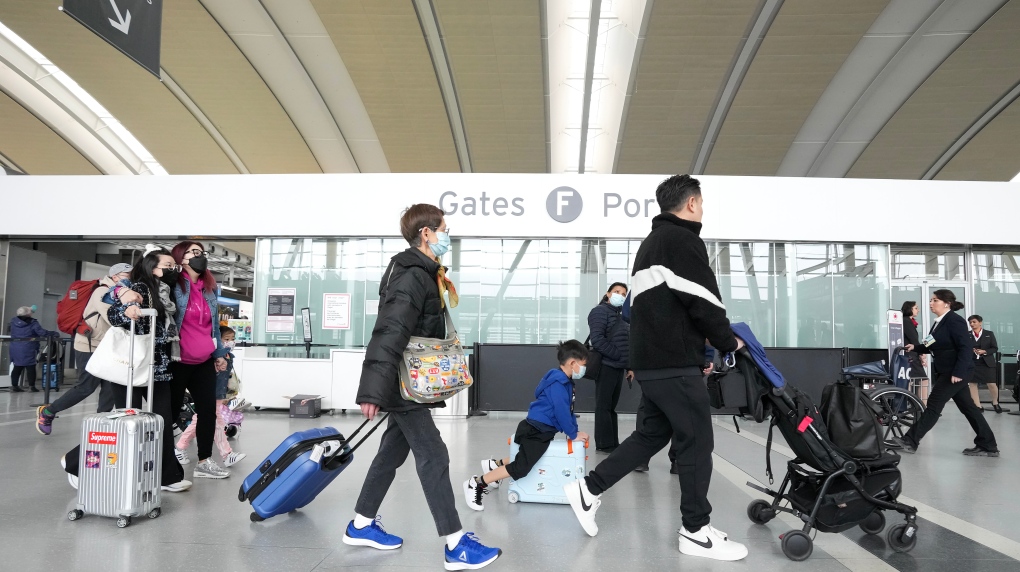What data is it capturing? Where is it being stored? Who has access to it? Are we as travellers being properly protected?
Those are just a few of the questions one Ontario cybersecurity expert has following an announcement by Toronto Pearson International Airport about its newest artificial intelligence partnership.
- Download our app to get local alerts on your device
- Get the latest local updates right to your inbox
“Lots of detail about increasing on-time performance and raising transparency with passengers, but really not a whole lot about how our privacy is going to be protected along the way. And these are questions that need to be answered,” Carmi Levy told CTV News Toronto.
On Tuesday, Canada’s busiest airport announced it had partnered with Swiss aviation software company Assaia to deploy its ApronAI technology.
The technology, which the Greater Toronto Airports Authority said uses AI “to track every aspect of aircraft turnaround performance,” will be deployed to all of Pearson’s 106 gates.
While officials said the data itself will be used to highlight and address inefficiencies, and provide accurate estimates of timeliness to increase gate availability – both of which are air travel insights that Pearson can benefit from following a challenging summer and winter travel season – the deployment of such a technology presents an ethical and operational balancing act, according to Levy.
 People are shown at Pearson International Airport in Toronto on Friday, March 10, 2023. THE CANADIAN PRESS/Nathan Denette
People are shown at Pearson International Airport in Toronto on Friday, March 10, 2023. THE CANADIAN PRESS/Nathan Denette
“On the one hand, we need to have our privacy protected, and we need to be protected from potential abuses of artificial intelligence. On the other hand, we don't want to return to the kinds of messes that we saw at Pearson last summer and again, last holiday season, and if technology can answer that, then I think most of us are willing to give it a shot.”
According to Assaia, their software uses a type of artificial intelligence called computer vision to generate insights from video streams and uses what it calls “untapped operational data to optimize” apron (or tarmac) operations in real-time.
At the surface, it appears the technology is largely focused on the plane itself, but it’s the use of AI in the airport, and it’s trajectory to become even more widespread in the aviation industry, that gives Levy pause.
“Whenever I hear AI, the first thing I think about is data, where is all that data coming from to train the AI? Where is all the data going that comes out of the system? Where is it stored? Who has access to it? Under what circumstances?
“We should be asking those questions about every technology, but especially AI because it is so far reaching when it comes to accessing data that can affect you and me, and I think these are reasonable questions to ask, as these systems are increasingly deployed both at Pearson, when we travel, as well as everywhere else in our day to day life.”
This isn’t Pearson’s first time tinkering with AI.
Last year, the airport announced it was testing a new AI-based security portal to automatically detect weapons as well as another program that carries out runway inspections powered by drones and AI.
As well, in February, a spokesperson for Air Canada told CTV News Toronto that its facial recognition technology, which offers passengers the choice to use the feature before boarding select flights, could soon be available for certain flights from Vancouver to Toronto “very shortly.”
For Assaia’s part, it said its technology has monitored over 1.5 million flights and observed over 3 million turnaround events while working with Seattle-Tacoma Airport, Halifax Stanfield Airport, British Airways, London Gatwick and more.
With files from CTV News Toronto’s Alex Arsenych and Ashley Legassic

Post a Comment